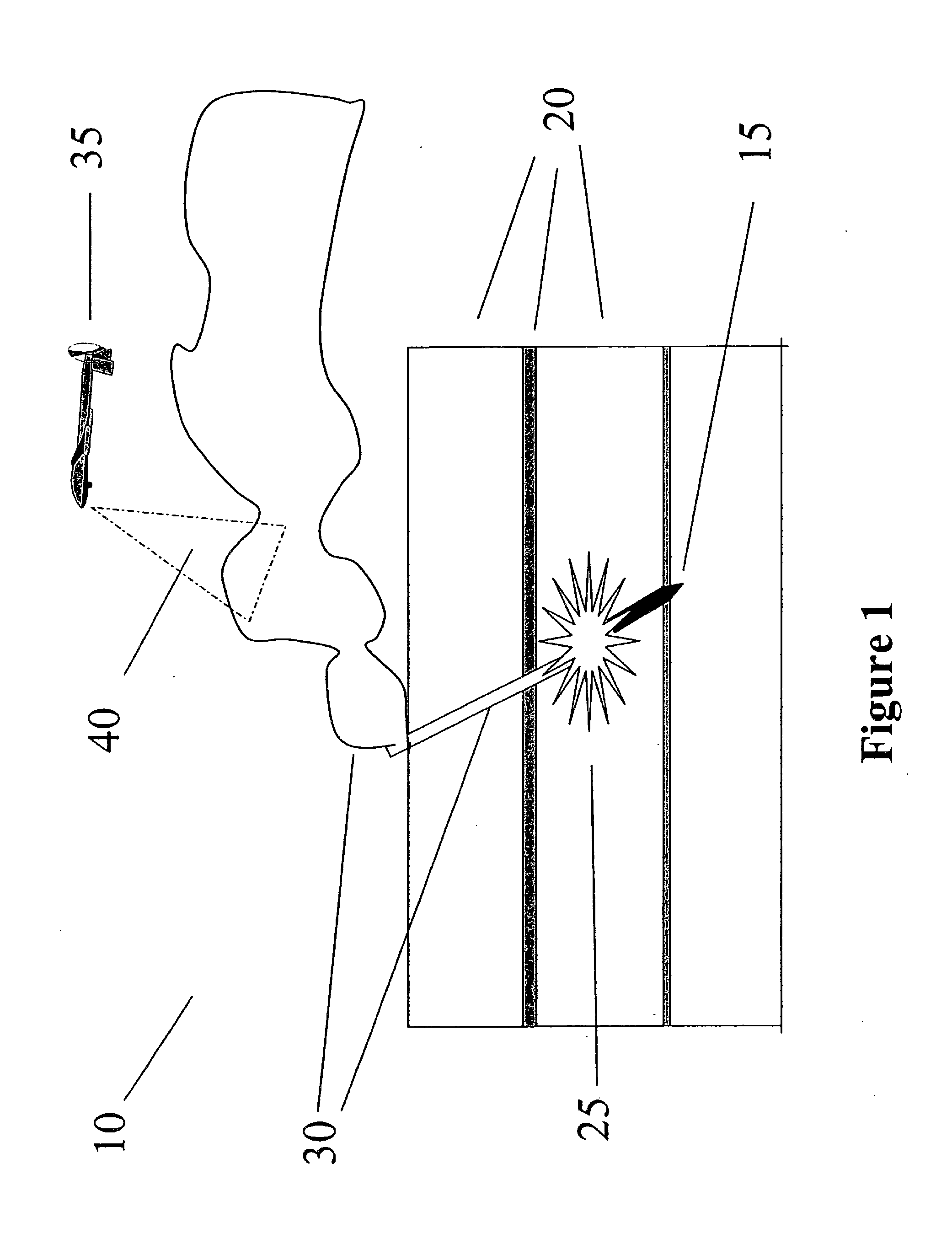Method and System For Detection Using Nanodot Taggants
a technology of nanodot and taggants, applied in the field of optical detection, can solve the problems of inability to detect, taggants may be extremely difficult, if not impossible to emit, and often do not survive in a hostile release environmen
- Summary
- Abstract
- Description
- Claims
- Application Information
AI Technical Summary
Benefits of technology
Problems solved by technology
Method used
Image
Examples
first embodiment
[0031]Referring to FIG. 1, a system 10 for detecting nanodot taggants according to the present invention is shown. In FIG. 1, an explosive device 15 detonates after traveling through multiple layers 20 of structural material (e.g., earth, building, etc.). The resulting plume or residue 30 is released from the point of detonation 25 and eventually travels away from the multiple layers of structural material 20. According to an embodiment of this invention, the plume contains nanodot taggants that were released, like the plume, from the explosive device upon detonation. Further, the nanodot taggants are engineered so as to emit at a predetermined frequency or frequencies in response to detonation of the explosive device. This emission may be triggered by the sun, i.e., ultraviolet radiation, a thermal activator, i.e., the explosion itself, or the absorption of a certain frequency or frequencies of radiation transmitted by a predetermined source. As such, upon detonation, the nanodot t...
second embodiment
[0041]In the present invention the nanodot taggants are used to optically mark target objects, e.g., tanks, for identification. A military application of this technology is referred to as “interrogation, friend or foe” or IFF. Using nanodot taggants as the identifier or transponder of the target object, a transmitter / detector configuration may be used to optically induce emission and / or absorbance of signature spectral frequencies by the nanodots. The detection of these signature spectral frequencies identifies the target object as a friend. The optical inducement by the transmitter / detector configuration is referred to as interrogation. The current invention allows us to take this embodiment even a step further, wherein the nanodot taggant system could be used to identify a specific target object based on its emitted signature spectral frequency. By specifically engineering the spectral signature of the nanodot taggant, the spectral signature may be so difficult to mimic that the s...
PUM
| Property | Measurement | Unit |
|---|---|---|
| temperatures | aaaaa | aaaaa |
| diameter | aaaaa | aaaaa |
| sizes | aaaaa | aaaaa |
Abstract
Description
Claims
Application Information
 Login to View More
Login to View More - R&D
- Intellectual Property
- Life Sciences
- Materials
- Tech Scout
- Unparalleled Data Quality
- Higher Quality Content
- 60% Fewer Hallucinations
Browse by: Latest US Patents, China's latest patents, Technical Efficacy Thesaurus, Application Domain, Technology Topic, Popular Technical Reports.
© 2025 PatSnap. All rights reserved.Legal|Privacy policy|Modern Slavery Act Transparency Statement|Sitemap|About US| Contact US: help@patsnap.com


